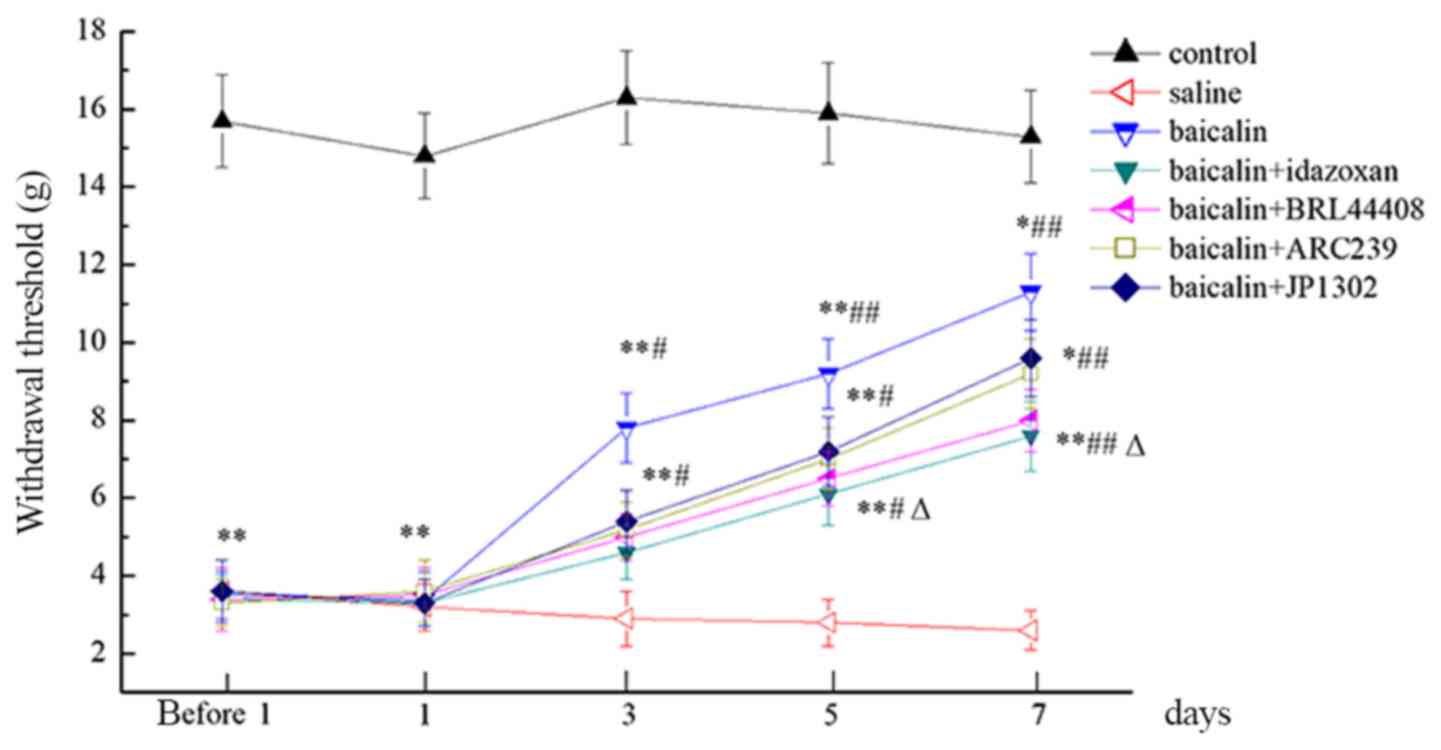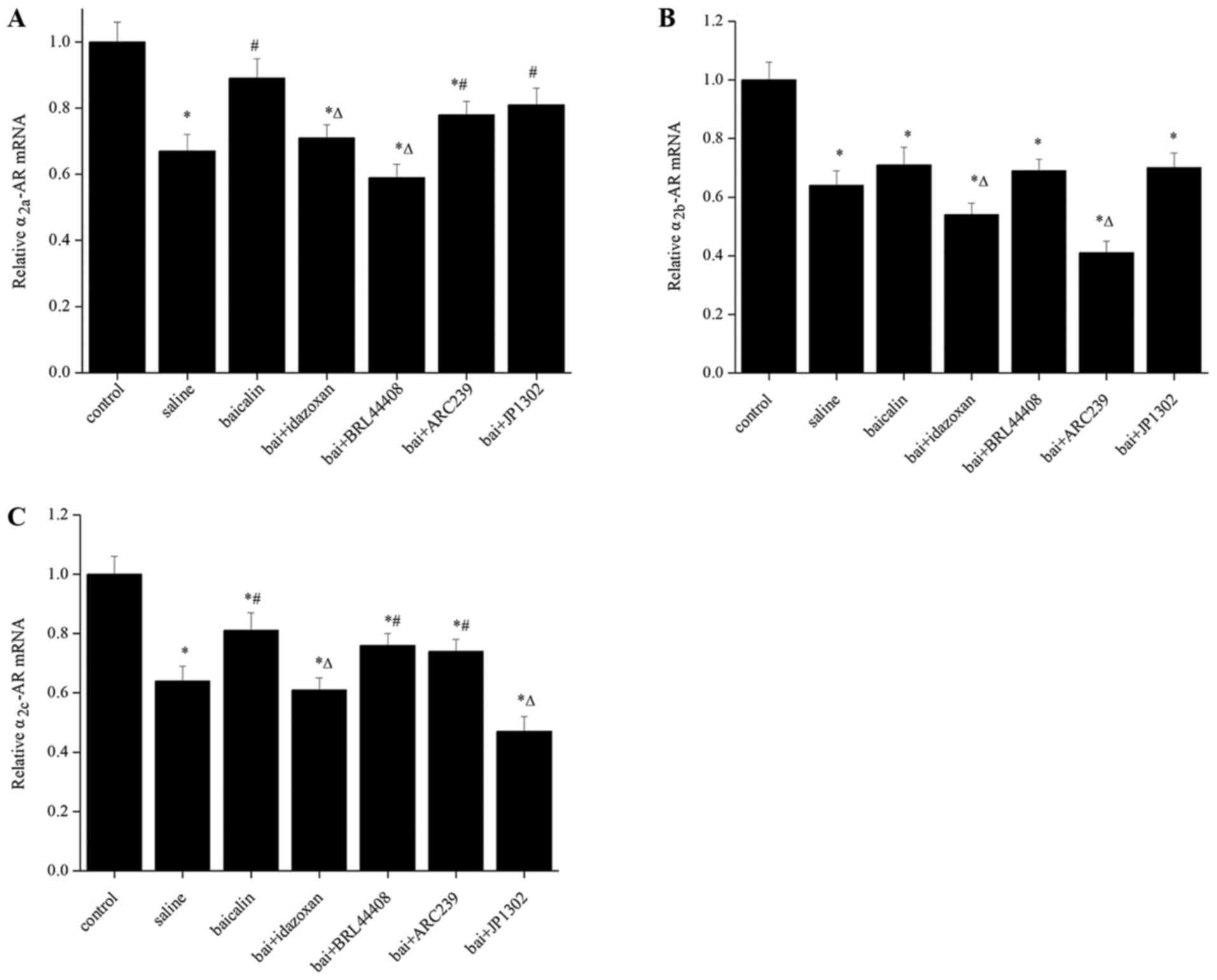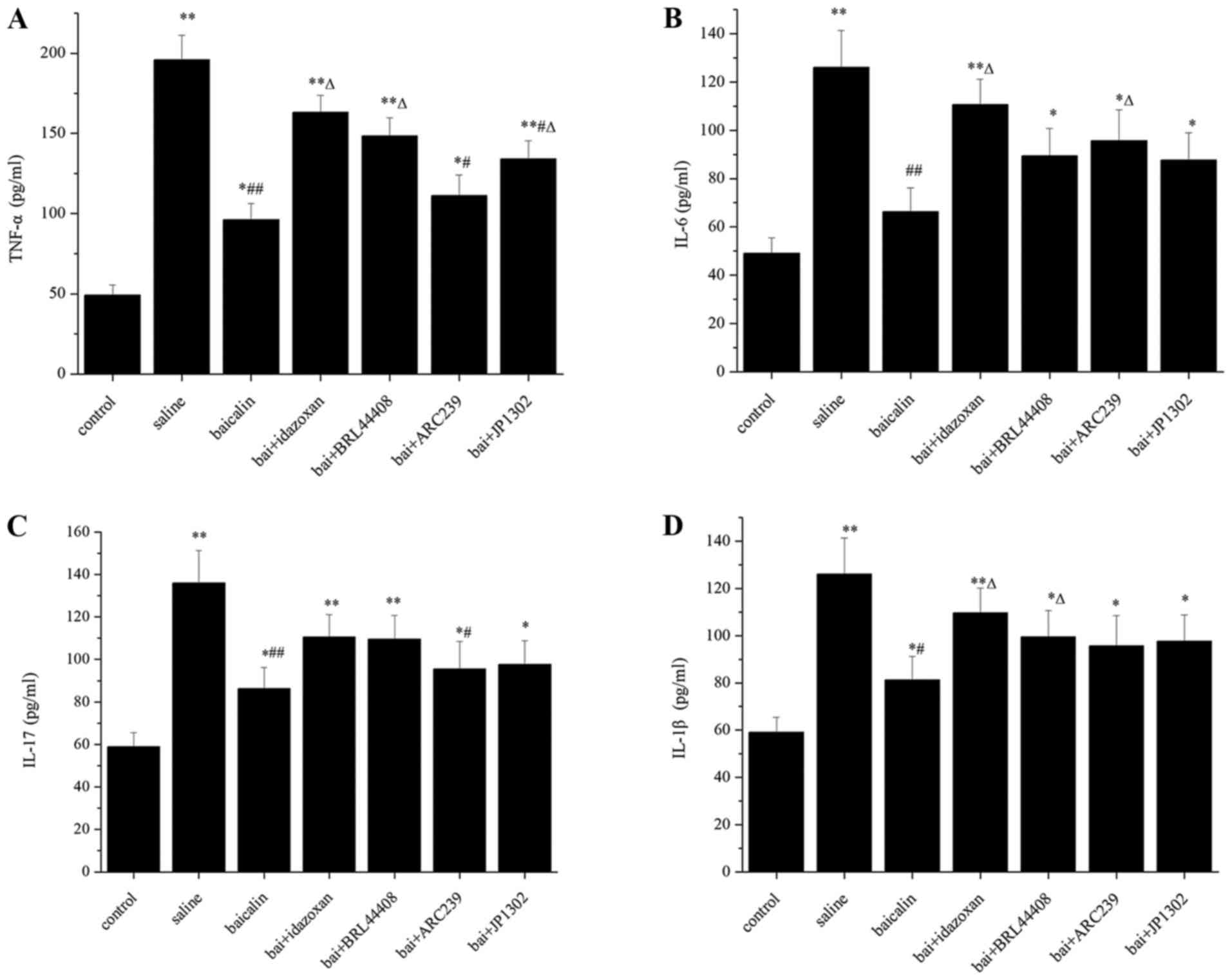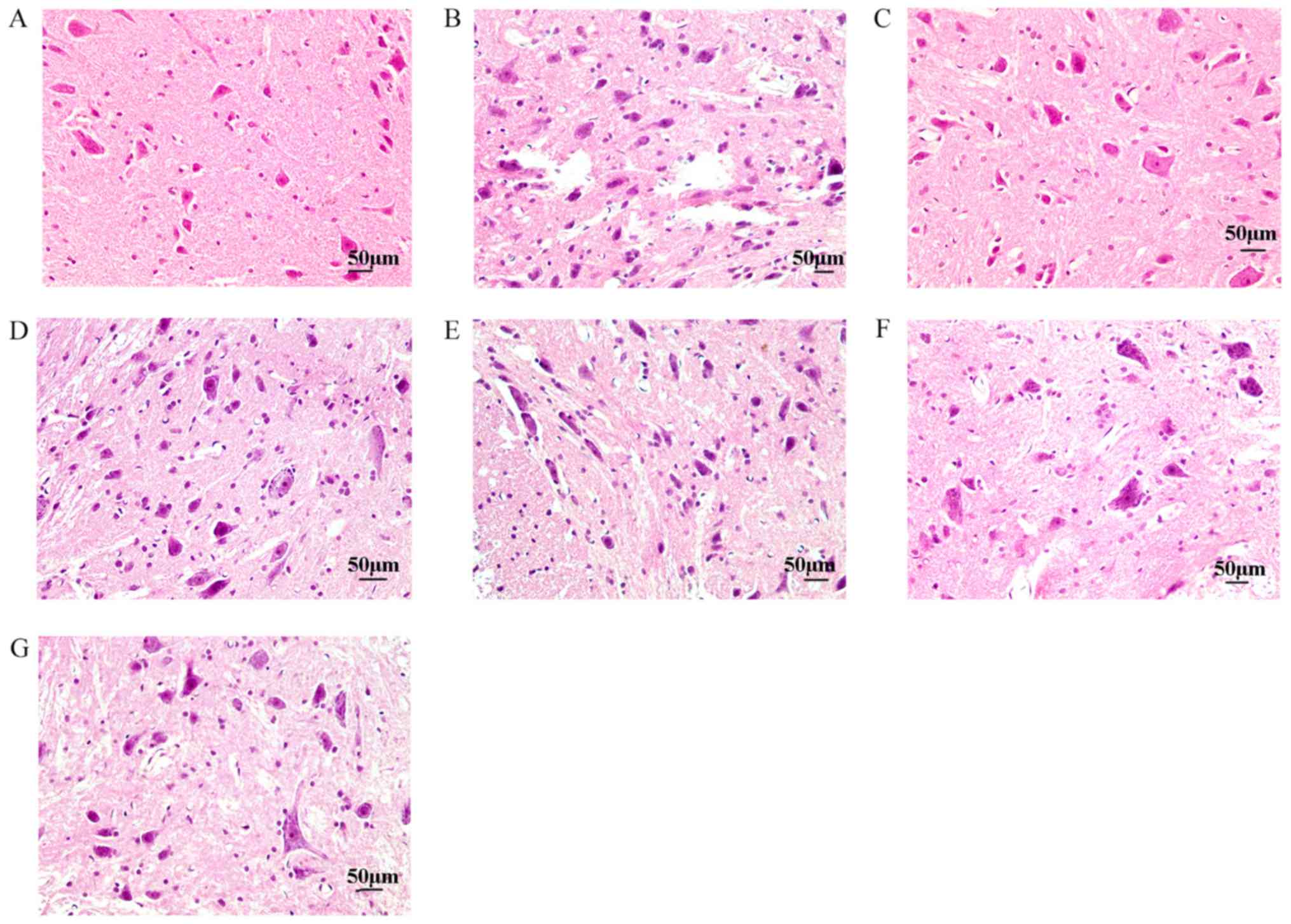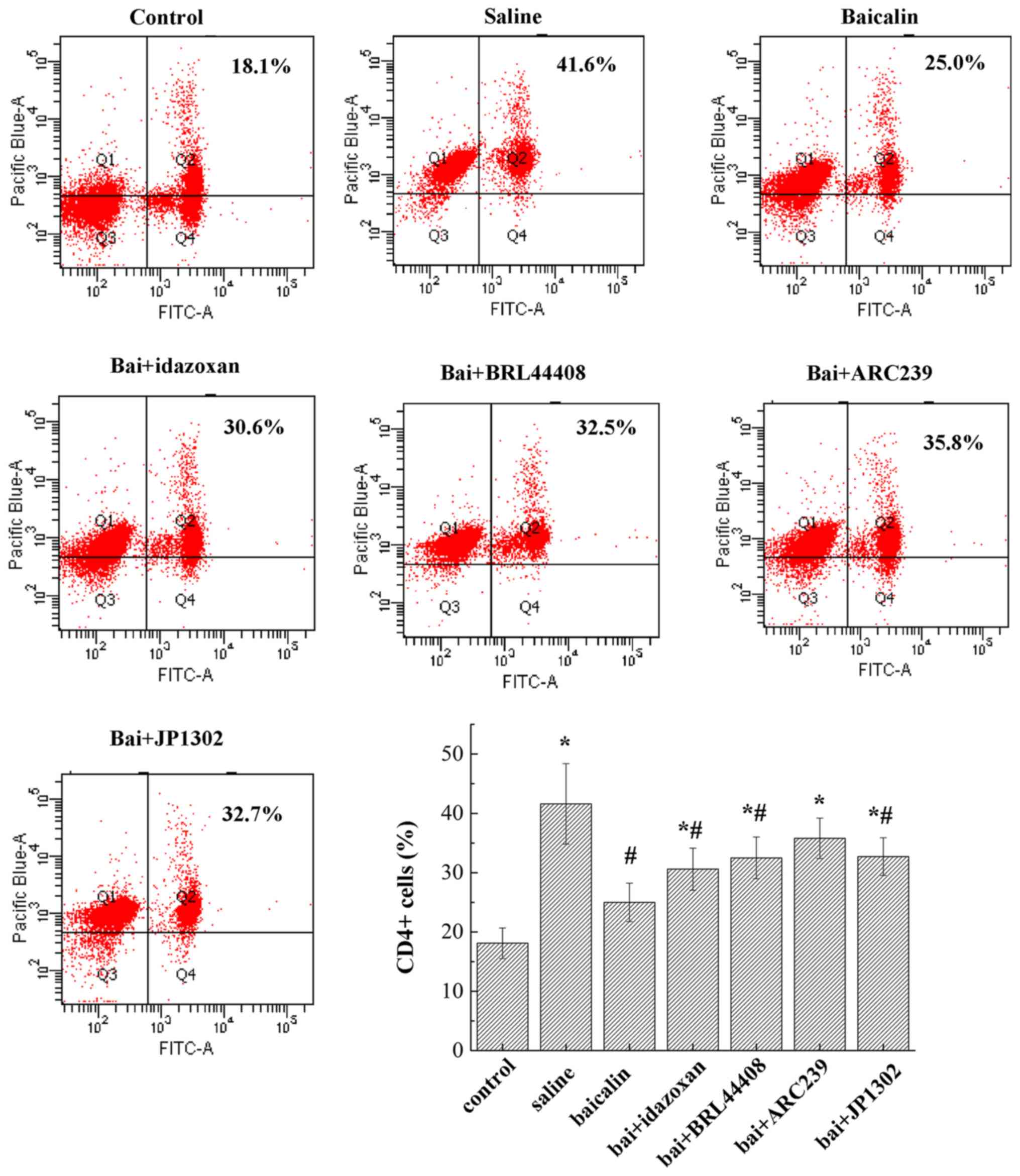|
1
|
Zhao Y, Xin Y and Chu H: MC4R is involved
in neuropathic pain by regulating JNK signaling pathway after
chronic constriction injury. Front Neurosci. 13(919)2019.PubMed/NCBI View Article : Google Scholar
|
|
2
|
Matias Júnior I, Medeiros P, de Freita RL,
Vicente-César H, Ferreira Junior JR, Machado HR and Menezes-Reis R:
Effective parameters for gait analysis in experimental models for
evaluating peripheral nerve injuries in rats. Neurospine.
16:305–316. 2019.PubMed/NCBI View Article : Google Scholar
|
|
3
|
Yao C, Zhou X, Zhao B, Sun C, Poonit K and
Yan H: Treatments of traumatic neuropathic pain: A systematic
review. Oncotarget. 8:57670–57679. 2017.PubMed/NCBI View Article : Google Scholar
|
|
4
|
Taheri A, Lajevardi M, Emami S, Shabani S
and Sharifi H: Commentary: Non-invasive brain stimulation, a tool
to revert maladaptive plasticity in neuropathic pain. Front Hum
Neurosci. 11(172)2017.PubMed/NCBI View Article : Google Scholar
|
|
5
|
Mankowski C, Poole CD, Ernault E, Thomas
R, Berni E, Currie CJ, Treadwell C, Calvo JI, Plastira C,
Zafeiropoulou E and Odeyemi I: Effectiveness of the capsaicin 8%
patch in the management of peripheral neuropathic pain in european
clinical practice: The ASCEND study. BMC Neurol.
17(80)2017.PubMed/NCBI View Article : Google Scholar
|
|
6
|
D'Arcy Y, McCarberg B, Parsons B, Behar R,
Thorpe A and Alexander A: Pregabalin for the treatment of
neuropathic pain: A narrative review for primary care providers.
Curr Med Res Opin. 33:1353–1359. 2017.PubMed/NCBI View Article : Google Scholar
|
|
7
|
Wang YX, Mao XF, Li TF, Gong N and Zhang
MZ: Dezocine exhibits antihypersensitivity activities in neuropathy
through spinal µ-opioid receptor activation and norepinephrine
reuptake inhibition. Sci Rep. 7(43137)2017.PubMed/NCBI View Article : Google Scholar
|
|
8
|
Di Cesare Mannelli L, Micheli L, Crocetti
L, Giovannoni MP, Vergelli C and Ghelardini C: α2 adrenoceptor: A
target for neuropathic pain treatment. Mini Rev Med Chem.
17:95–107. 2017.PubMed/NCBI View Article : Google Scholar
|
|
9
|
Li C, Ji BU, Kim Y, Lee JE, Kim NK, Kim ST
and Koo S: Electroacupuncture enhances the antiallodynic and
antihyperalgesic effects of milnacipran in neuropathic rats. Anesth
Analg. 122:1654–1662. 2016.PubMed/NCBI View Article : Google Scholar
|
|
10
|
Romero-Sandoval EA, McCall C and Eisenach
JC: Alpha2-adrenoceptor stimulation transforms immune responses in
neuritis and blocks neuritis-induced pain. J Neurosci.
25:8988–8994. 2005.PubMed/NCBI View Article : Google Scholar
|
|
11
|
Chabot-Doré AJ, Millecamps M, Naso L,
Devost D, Trieu P, Piltonen M, Diatchenko L, Fairbanks CA, Wilcox
GL, Hébert TE and Stone LS: Dual allosteric modulation of opioid
antinociceptive potency by α2A-adrenoceptors. Neuropharmacology.
99:285–300. 2015.PubMed/NCBI View Article : Google Scholar
|
|
12
|
Hughes S, Hickey L, Donaldson LF, Lumb BM
and Pickering AE: Intrathecal reboxetine suppresses evoked and
ongoingneuropathic pain behaviours by restoring spinal
noradrenergic inhibitory tone. Pain. 156:328–334. 2015.PubMed/NCBI View Article : Google Scholar
|
|
13
|
Lin CC and Shieh DE: The anti-inflammatory
activity of scutellaria rivularis extracts and its active
components, baicalin, baicalein and wogonin. Am J Chin Med.
24:31–36. 1996.PubMed/NCBI View Article : Google Scholar
|
|
14
|
Boadas-Vaello P, Vela JM and Verdu E: New
pharmacological approaches using polyphenols on the physiopathology
of neuropathic pain. Curr Drug Targets. 18:160–173. 2017.PubMed/NCBI View Article : Google Scholar
|
|
15
|
Cherng CH, Lee KC, Chien CC, Chou KY,
Cheng YC, Hsin ST, Lee SO, Shen CH, Tsai RY and Wong CS: Baicalin
ameliorates neuropathic pain by suppressing HDAC1 expression in the
spinal cord of spinal nerve ligation rats. J Formos Med Assoc.
113:513–520. 2014.PubMed/NCBI View Article : Google Scholar
|
|
16
|
Chou TC, Chang LP, Li CY, Wong CS and Yang
SP: The antiinflammatory and analgesic effects of baicalin in
carrageenan-evoked thermal hyperalgesia. Anesth Analg.
97:1724–1729. 2003.PubMed/NCBI View Article : Google Scholar
|
|
17
|
Levy RM, Saikovsky R, Shmidt E, Khokhlov A
and Burnett BP: Flavocoxid is as effective as naproxen for managing
the signs and symptoms of osteoarthritis of the knee in humans: A
short-term randomized, double-blind pilot study. Nutr Res.
29:298–304. 2009.PubMed/NCBI View Article : Google Scholar
|
|
18
|
Chaplan SR, Bach FW, Pogrel JW, Chung JM
and Yaksh TL: Quantitative assessment of tactile allodynia in the
rat paw. J Neurosci Methods. 53:55–63. 1994.PubMed/NCBI View Article : Google Scholar
|
|
19
|
Livak KJ and Schmittgen TD: Analysis of
relative gene expression data using real-time quantitative PCR and
the 2(-Delta Delta C (T)) method. Methods. 25:402–408.
2001.PubMed/NCBI View Article : Google Scholar
|
|
20
|
Listowska M, Glac W, Grembecka B,
Grzybowska M and Wrona D: Changes in blood CD4+T and
CD8+T lymphocytes in stressed rats pretreated
chronically with desipramine are more pronounced after chronic open
field stress challenge. J Neuroimmunol. 282:54–62. 2015.PubMed/NCBI View Article : Google Scholar
|
|
21
|
Xue ZJ, Shen L, Wang ZY, Hui SY, Huang YG
and Ma C: STAT3 inhibitor WP1066 as a novel therapeutic agent for
bCCI neuropathic pain rats. Brain Res. 1583:79–88. 2014.PubMed/NCBI View Article : Google Scholar
|
|
22
|
Li X and Eisenach JC: alpha2A-adrenoceptor
stimulation reduces capsaicin-induced glutamate release from spinal
cord synaptosomes. J Pharmacol Exp Ther. 299:939–944.
2001.PubMed/NCBI
|
|
23
|
Donello JE, Guan Y, Tian M, Cheevers CV,
Alcantara M, Cabrera S, Raja SN and Gil DW: A peripheral
adrenoceptor-mediated sympathetic mechanism can transform
stress-induced analgesia into hyperalgesia. Anesthesiology.
114:1403–1416. 2011.PubMed/NCBI View Article : Google Scholar
|
|
24
|
Hayashida K, Kimura M, Yoshizumi M, Hobo
S, Obata H and Eisenach JC: Ondansetron reverses
anti-hypersensitivity from clonidine in rats following peripheral
nerver injury: Role of γ-amino butyric acid in α2-adrenoceptor and
5-HT3 serotonin receptor analgesia. Anesthesiolgy. 117:389–398.
2012.PubMed/NCBI View Article : Google Scholar
|
|
25
|
Hayashida K and Eisenach JC: Spinal alpha
2-adrenoceptor- mediated analgesia in neuropathic pain reflects
brain-derived nerve growth factor and changes in spinal cholinergic
neuronal function. Anesthesiology. 113:406–412. 2010.PubMed/NCBI View Article : Google Scholar
|
|
26
|
Kiasalari Z, Rahmani T, Mahmoudi N,
Baluchnejadmojarad T and Roghani M: Diosgenin ameliorates
development of neuropathic pain in diabetic rats: Involvement of
oxidative stress and inflammation. Biomed Pharmacother. 86:654–661.
2017.PubMed/NCBI View Article : Google Scholar
|
|
27
|
Ghasemzadeh RM, Amin B, Mehri S,
Mirnajafi-Zadeh SJ and Hosseinzadeh H: Anti-inflammatory effects of
ethanolic extract of rosmarinus officinalis L. and rosmarinic acid
in a rat model of neuropathic pain. Biomed Pharmacother.
86:441–449. 2017.PubMed/NCBI View Article : Google Scholar
|















